Escape from No Dally Alley - Seneca Rocks, WVLabor Day weekend found us at Seneca Rocks, our favorite trad oasis.
![Judge and John at Seneca Rocks WV]()
Escape from No Dally Alley - Seneca Rocks, WV
We left on Saturday morning from NC so we planned to get in a few easy pitches in the afternoon. We started our climb about 2 PM and after a brisk approach hike and an easy first pitch, we were at No Dally Alley for the second and last pitch of our “easy warm up” first day. We had chosen to take on the first section of the West Face to Gunsight Notch (WFTGN) line to get to the No Dally Alley, a large vertical flake separated from the main body of rock leading to the north summit. The “alley” varies from about 3 feet wide to about 5 feet wide leaving a separate fin, once scaled, with a top 2 feet wide and about 150 feet of vertical exposure to the tree tops on the west side.
![View of the Bell Wall from Tomato's Belay Station]() View of No Dally Alley on the far left and the Gunsight Notch - Image by SummitPost RyderS
View of No Dally Alley on the far left and the Gunsight Notch - Image by SummitPost RyderSThe climb getting us to the alley entrance took us along the approach to the famous Gunsight Notch climb to the south summit. I read about this climb in a trip report from SummitPost, Bob Sihler, who had climbed Old Man’s route early one morning a few years ago and captured some amazing photos of the Gunsight and No Dally Alley.
The Gunsight is wildly exposed and the 5.4 line we planned for Sunday climbs the edge of the fin to the south summit. There is about 200 feet of exposure on the west side and much more – maybe 300 feet on the east. We were interested to see that climb up close for ourselves, so we planned an easy afternoon climbing to the base of the Gunsight and then exit to the north summit from No Dally Alley. We figured it would take us about two leisurely hours of climbing, so we could be at camp well before dark. Turns out we needed most of the evening to extract ourselves.
Judge, Katie’s boyfriend, knew we were planning the trip, and he called me earlier in the week to say that he had gotten the holiday weekend off work and wanted to know if John and I would take him on his second multi-pitch outing. I had chided John that we needed to do some off line training with Judge before the trip, who had most of his experience in climbing gyms and bouldering. We figured that we could show him some basic self-rescue techniques as we went. A month earlier Judge’s first experience at multi-pitch trad had gone well. He was very comfortable with the exposure and rope work at the Sentinel Buttress of Moore’s Wall. Judge is an exceptional athlete with a cool head, so he is a wonderful rookie partner.
![No Dally Alley - Seneca Rocks WV]() Looking south down the alley about 150 feet below the north summit. Sorry for the lighting. It is very difficult to take pictures in that dark space with the sunlight filtering in
Looking south down the alley about 150 feet below the north summit. Sorry for the lighting. It is very difficult to take pictures in that dark space with the sunlight filtering in
From the “entrance” of No Dally Alley, the dirt floor of the alley slopes upward at about a 30 degree angle and is easily and safely climbed unprotected from the entrance to the far north side. The standard exit out of No Dally Alley is a 5.2 rated climb up a sloping small ledge from the far north of the alley traversing south up the east face. Above that, at the south end at the top of the east wall is a short vertical crack, about 15 feet high which is the final exit point to get to the ridge/ledge. The east wall from the floor of the alley averages about 100 feet high. Both faces, east and west, of the alley are smooth. Once the climber reaches the top he then walks across the 2 foot wide ridge for about 70 feet, traversing back to the north. There is no pro on the ridge. The final part of the climb is to cross a chock stone to the west face of the alley to the main body of rock on the north summit. The exit from the chock stone appears to be an easy sloping face. It looks ok for slab footing but on closer inspection it is lichen covered and very dirty with ball bearing rock everywhere and no hand holds. The belay station is located at the first substantial tree about 60 feet below the north summit. This leaves the climber an easy 4th class scramble to the top which intersects a National Park Service trail ending at the north summit observation tower. Whereas the south summit requires a rappel, the north summit is a simple two mile walk down a wide approach path.
Inside the alley, as we set up for the second pitch, we found the character of the rock on the first 80 feet to be markedly different than the exposed Tuscarora quartzite rock at Seneca. It was smooth and damp, with sketchy pro, especially low in the climb. The alley is really too wide to span, so the climbing was all face. Seneca is known for sandbagged ratings. This climb was no different. Who rated this a 5.2 anyway?? The guidebook lists no protection rating. I completed climbs all over this crag rated more difficult and found No Dally Alley to be much more treacherous than anything we had tried previously on a dozen days of climbing. When I saw what I considered to be the R rated pro, I actually considered reversing our first pitch and down climbing. I mentioned this to John, yet he felt confident and convinced me to try it.
![View from beneath the...]() View of No Dally Alley circa 1980. Note the chock stone had not fallen yet, which can be seen in the earlier pic Climbers are on the traverse from the Gunsight to the entrance to the Alley. Pic by SummitPost Desainme.
View of No Dally Alley circa 1980. Note the chock stone had not fallen yet, which can be seen in the earlier pic Climbers are on the traverse from the Gunsight to the entrance to the Alley. Pic by SummitPost Desainme.
John led the pitch. The small ledge offered fair footing, but the hand holds were few and far apart, so this section is all about balance. He could not get any pro in until he was up about 20 feet. He put in a stopper as his first piece in a good placement but he really couldn’t get it jammed. It was directly before a couple of teetering moves so neither one of us wanted to trust a single piece for a potential 30 foot pendulum fall. He was able to get in a small cam a bit higher to back it up. There the wall bulged out about two feet, so without hand holds it was very difficult to keep balanced. The climber’s feet are almost inside the center of gravity there so the tendency is to peel off backwards. John gutted out the crux and set some more pro at his next first option. He was really run out. I was concerned that the two first pieces, he had set, were not sufficient for side loading, which the pieces would definitely see on a shock load in case of a long pendulum fall.
![No Dally Alley - Seneca Rocks WV]() John starting the crack section of the climb. Check out the small ledge leading up the east face. Sorry for the poor lighting
John starting the crack section of the climb. Check out the small ledge leading up the east face. Sorry for the poor lighting
At that point I was thinking ahead that the last climber would be at more risk, because it was impossible to set pieces after the tough moves. Therefore protecting from a top belay would necessitate a long pendulum in case of a fall. If any of the lower pieces pulled it would mean the risk of a fall all the way to the floor of the alley because the pendulum might be greater than the vertical height of the fall. Later we found that the guidebook recommends splitting the climb into two short pitches, with the first belay station recommended at the top of the crack on the alley ridge. In retrospect this would have been a much better option.
![No Dalley Alley - Seneca Rocks WV]() John on top of the ridge
John on top of the ridge
John handled the short crack climb well. Coming out of that confined space to such exposure with the full view of the valley is what makes climbing at Seneca so great. He crossed the ledge after mustering up his courage to “walk the plank”. It is really very secure but with a high pucker factor. He crossed the chock stone and at this point he committed to the lichen covered slope. However the rope went taught and left him a few short feet from the security of the first belay station in a tenuous position. He asked me for slack but the problem was not from my belay but somewhere else in the system. With a long reach, he wrapped a sling around the tree and clipped in. He then down climbed in relative safety by paying out a long cordelette. He was able to get back to the chock stone to contemplate how to free the trailing rope. As it turned out, it was hung at the corner of the traverse at the far south side of the ledge, where excess slack had bound it at a pinch point between two cam placements in the exit crack.
Since it was getting into the afternoon and there was very little wind, we could communicate fairly well. He tried for a long while but John could not free the rope. I tried from the bottom with no success. So the rope was stuck and it could not be used to belay me as the second.
We discussed several options… First we dismissed a down climb by John because he did not want to reverse the traverse across the top of the flake while unprotected. Since the rope was jammed I could not take up the slack. John was also uncomfortable with the exit from the chock stone up the dirty slope. 2. We discussed setting a rope to climb vertically up the west face since the belay station was almost vertical from the start of the climb. We had a safety rope along but it was in my backpack at the base of the alley, not with John at the top of the climb. No chance to climb out that way. 3. We finally decided on a third option. Since John was anchored in, he untied from his climbing rope and secured the rope to the tree with another two slings and a pair of biners. This fixed the rope at the top. At the bottom of the pitch, I then set up a pair of prussics on the leading fixed rope. I moved these knots up the rope in a self-belay as I ascended. I had Judge belay me from behind on my trailing rope. We felt this was the safest option.
![The view from the start of West Face to Gunsight]() The view looking south at the beginning of the West Face to Gunsight route.
The view looking south at the beginning of the West Face to Gunsight route.
When I started the climb, John’s first stopper pulled free because of the rope movement. I passed the small cam and clipped my trailing rope in, leaving me between the small cam and the next piece some 30 feet up and left. This was the crux John had carefully handled. I’m getting too old and much less flexible for these contortionist moves. I had no handholds, feet on a wet ledge, with my upper body leaning out to avoid the bulge. The best move was to cross my right foot behind my left and find purchase up the ledge about two feet higher and to the left of my left foot. This would keep my shoulders and hips square to the wall and allow for the proper balance sans any hand hold. Try as I might, I just could not find the right balance when transferring my weight from my left foot back to my crossed right foot; this because I had no counter push with my hands on the wet wall. I finally gave up. I then committed to keeping my waist below the bulge, and from that awkward crouch crossed my right foot inside my left turning my waist to the right, leaving my shoulders square. The first step left me in a “barn door” and I lost balance and twisted off.
It was a slow peel, giving me time to call “falling!” long before I left the ledge. Judge tightened the belay on the trailing rope, but the cam on the trailing rope pulled free from the side force. This caused a 15 foot pendulum left and about a 15 foot vertical fall. All my weight was on the upper rope attached through the prussic knot. Judge slowed the pendulum fall with counter pressure but did not take any of my weight.
Hanging there, I took a minute to assess my situation and get my heart rate down. I ended upright, hanging about 40 feet up off the sloping floor of the alley. Judge told me I hit the opposite wall of the chimney fairly hard but I was wearing a backpack and a helmet so I came to rest without a scratch. I do not recall the impact. Most distressing was that the upper rope had dragged across the edge of the small ledge during my fall exposing the inner cord in a few places. It was not remotely close to being severed, but just the view of few small bits of the white inner cord caused me to fight a feeling of flight. There were five pieces of pro above me so I was very secure in that way. I calmed myself, unclipped my third cordelette from my belt loop and used it stand in to unweight the harness prussic knot I had fallen on. It was cinched up tight, but after a few minutes effort, it loosened and allowed me to start to climb the rope back to the mini-ledge. After reaching the ledge, which at that point was actually a small flake, I realized my fall loosened a large piece. To weight that section of the flake would potentially cause a 200 pound rock section to free fall past me down into the alley. “Come on,” I thought. What else could this “easiest” climb throw at us? I was able to horse my way back onto the ledge without dislodging the loose rock. From there the climb was much easier, no tougher than the 5.2 rating.
I only had two cams with me, with no slings, and anyway nowhere to place pro to protect Judge’s following traverse. At that point John and I decided, once I completed my climb, we would have Judge climb up my trailing rope vertically up the west face since the belay station was directly above us. This option rather than try to follow me on a route sparsely protected. I then continued the climb and cleaned all but one piece. We did leave the damaged rope with the intent to retrieve it the next day when we had more light.
As I topped out of the alley onto the airy ledge John informed me we had only 30 minutes of light left. We had two head lamps with us, one was with Judge. It appeared he would need to ascend the rope in the dark.
![The view from just below the north summit - Seneca Rocks WV]() The view from just below the north summit
The view from just below the north summit
The crossing on the chock stone and the climb up the sloping ridge was easy with a fixed rope to aid me in the climb. I passed the belay station, then un-roped, and finished the scramble to the summit to make sure we could find our exit trail before it got dark.
![North peak]() The north peak looking south. The way we took down in the dark.
The north peak looking south. The way we took down in the dark.There I met another team, who had heard some of our discussions. They realized we were working our way out of a bit of a jam, they offered their rope and any other aid. We did not need any help then, but I was glad to accept their offer to wait to bug out until Judge extracted himself. There we all watched the sunset, while John coached Judge into his climb.
John fixed the good rope I had trailed to the belay station and dropped it to Judge who was almost vertically below the belay station. Judge ascended the smooth west face using standard foot and seat harness prussic technique. Judge had never done this before. He had watched carefully my method and learned from watching. He is really quite a cool customer, but he said later that it got his adrenaline going. I am sure I would not have wanted to learn to climb a rope in that situation and in the dark with a head lamp. We did have a 100 foot static safety rope which John lowered to set up a top belay in case Judge ran into trouble. He was quite safe, but still very happy to crest out.
![North Peak from Gunsight Notch]()
North peak looking north. Pic by Bob Sihler
The follow day we slept in a bit, got breakfast and walked up to the top of the north summit to retrieve our gear and rope on rappel. Since we only had one good climbing rope we decided to head on home.
![John setting up the anchor - North Summit Seneca Rocks WV]() John setting up the anchor
John setting up the anchor
John and I spend some time re-living the climb and trying to learn what we could have done differently. What is the best response to a jammed rope on a long traverse??
![Rappel below the north summit - Seneca Rocks WV]() Retrieving our rope and gear from the previous night
Retrieving our rope and gear from the previous night
Outside of bailing on the climb, setting up an interim belay (this was our biggest mistake), and John being more careful with his placements to prevent the rope jamb, we are not sure that we would do anything differently. Still I post this to take any comments from the more experienced climbing community.
![Judge looking all contemplative - Seneca Rocks WV]() Judge looking all solemn. Probably thinking about his rope ascent in the dark from the previous night.
Judge looking all solemn. Probably thinking about his rope ascent in the dark from the previous night.


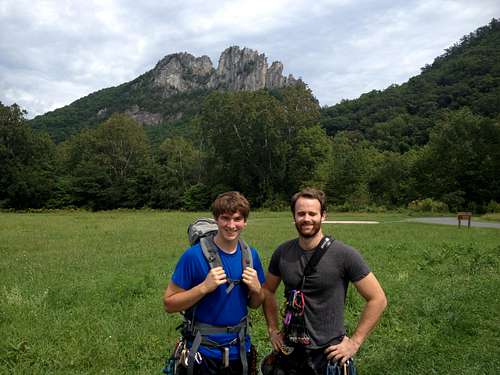

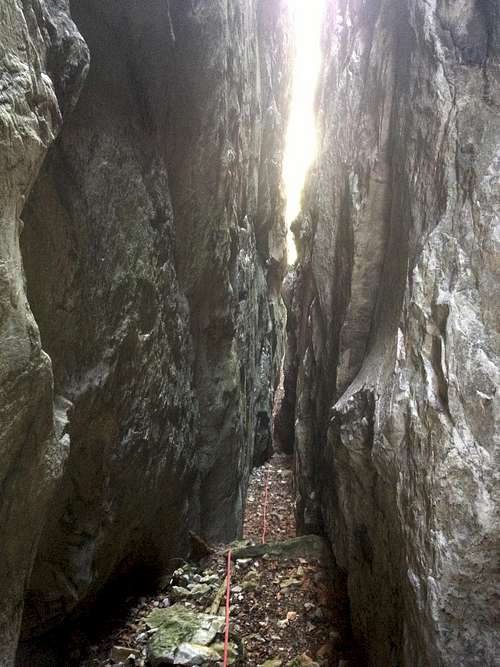
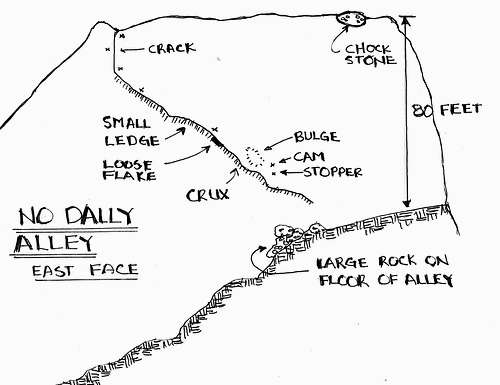
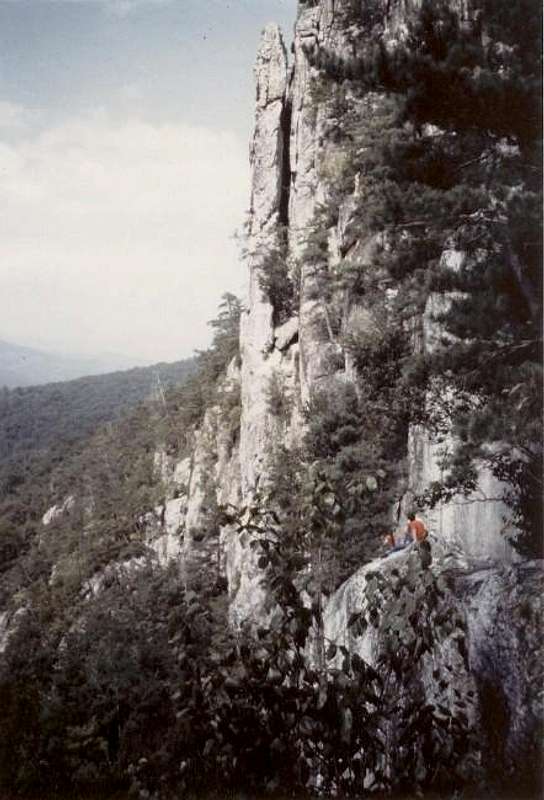
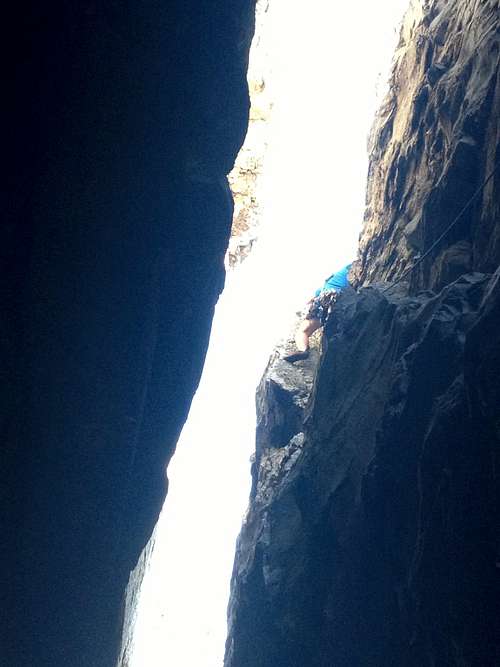
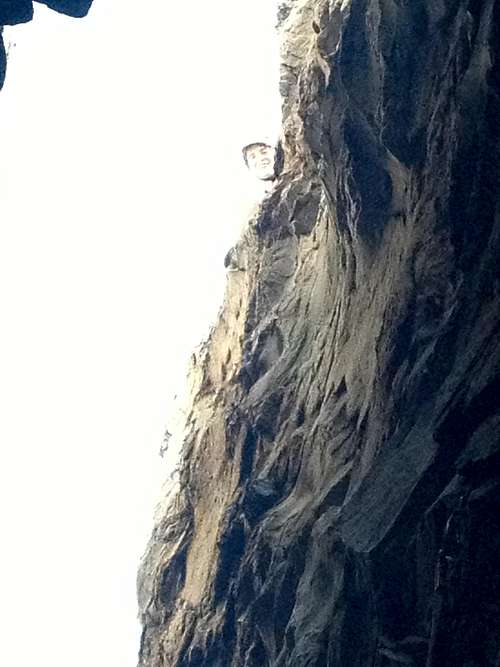
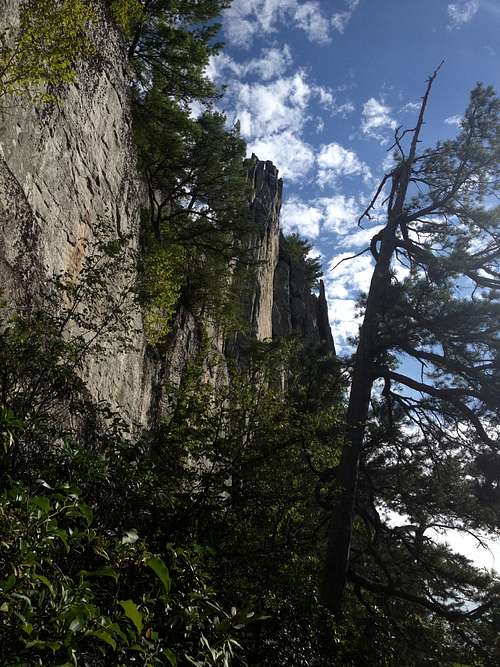
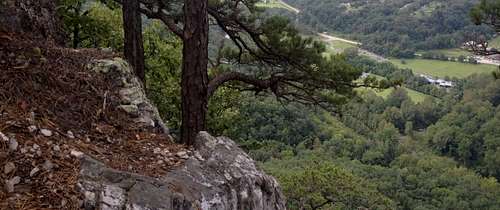
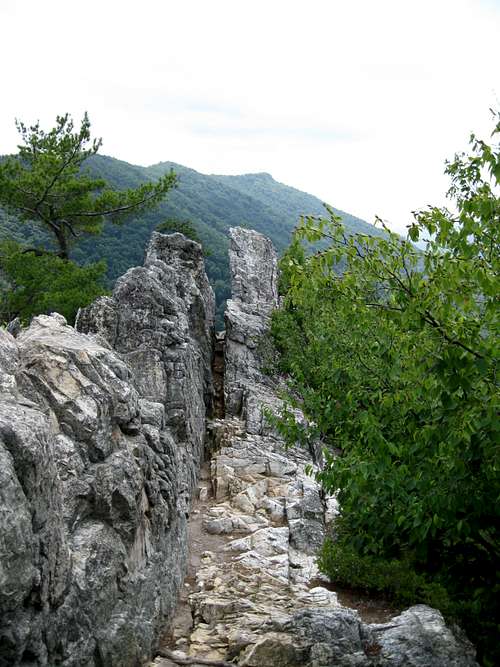


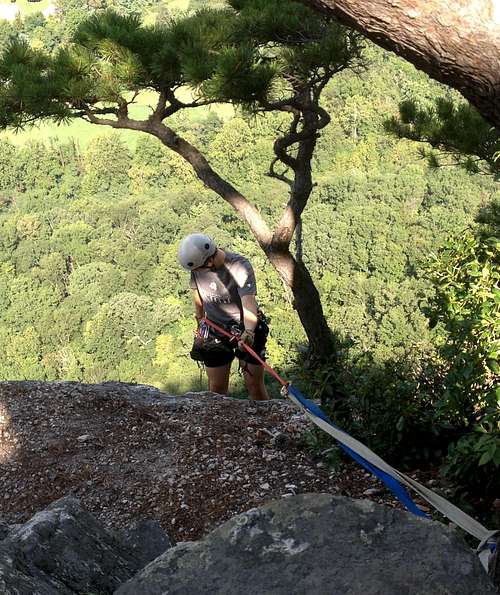
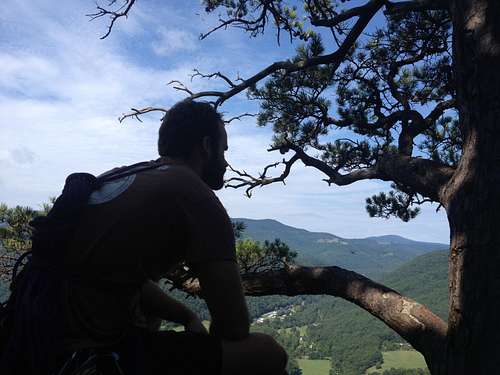


Comments
Post a Comment